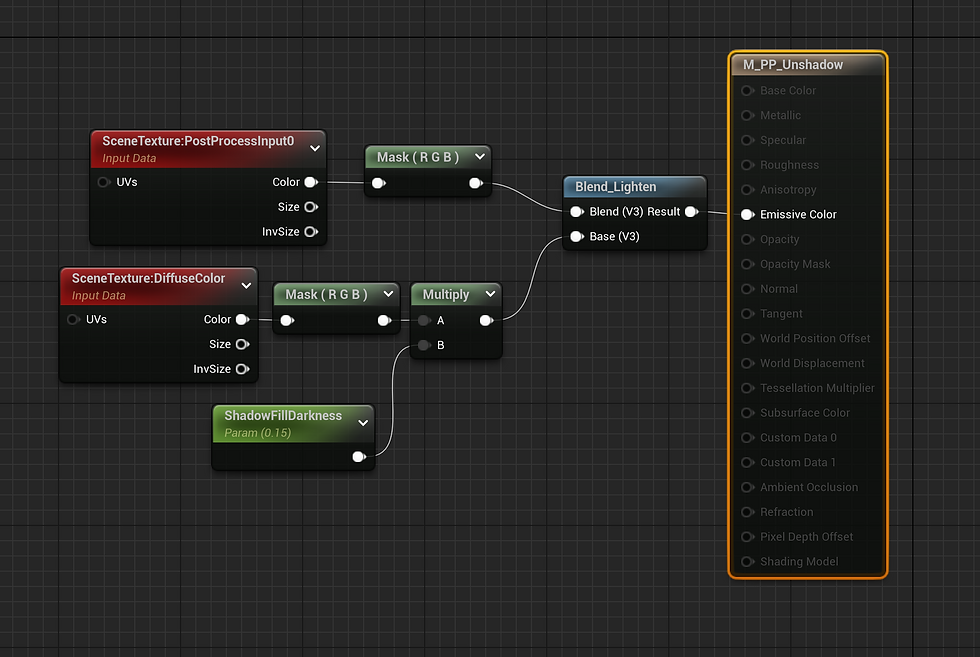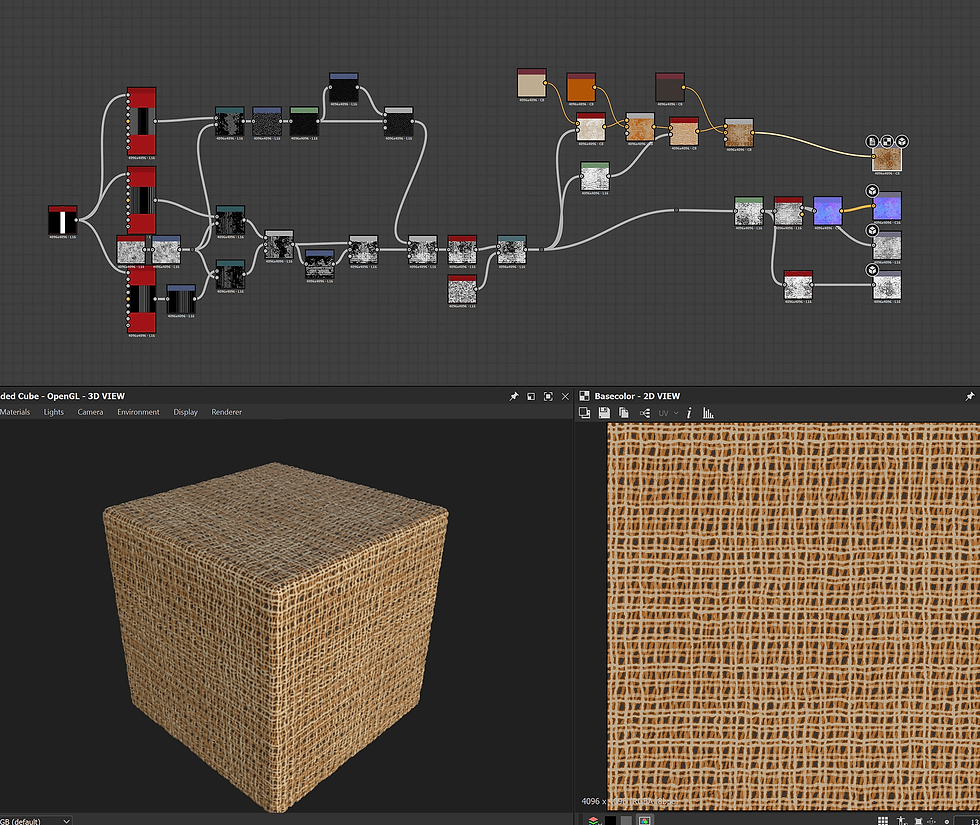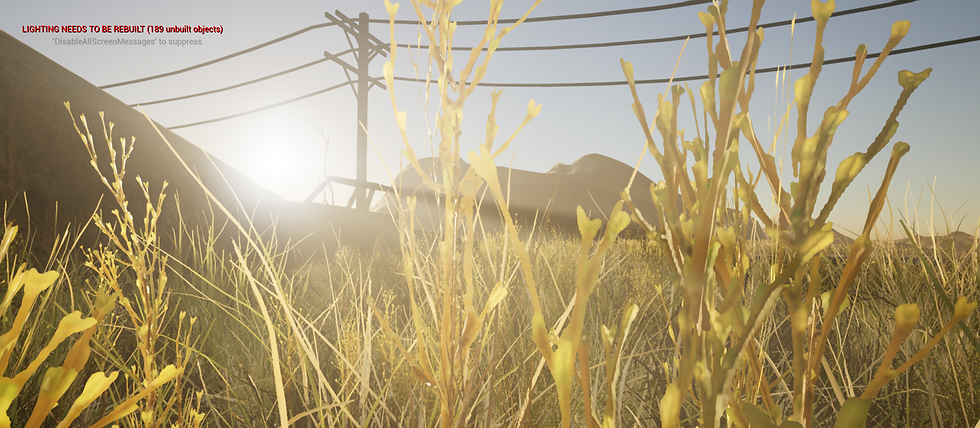Week of 2/7
- Drew Abegg
- Feb 16, 2022
- 3 min read
Before I get into this week, I want to mention something that I forgot in the last post. While we were building out the greybox level with assets and lighting, we were noticing that, without the ambient light you would usually get from an outdoor setting, we were getting some pitch black areas where the player could not see. One solution would be to add more lights, but our lighting was taking a massive computational toll as-was. Instead I suggested that I could solve the problem with post processing.
The basic idea was that the post process material would compare the lit scene with a darkened unlit one. Wherever the darkened unlit one was brighter than the lit one, the darkened unlit would replace the lit. Have fun reading that sentence. Here's the graph:

Simple, but effective. Ideally, a player would not end up in a scenario where it was too dark for them to navigate, but they also would not notice the divergence from the usual properties of physics-based rendering. By that metric, I believe it was a success! We had a pretty good playtesting and feedback sample size, and I never heard anyone notice the inconsistencies, nor did I hear any reports of anyone getting lost in the darkness. The latter was especially important for us to avoid, because last time we made a dark, atmospheric, black and gold, 3D, narrative jam game that ends with the player's inevitable death (Descent of Greed), we ended up with an unplayable product largely because the main mechanic was stumbling around in perfect darkness.
And yes, the similarities between these two games are uncanny. I only realized this after we had determined our direction, so it was set in stone. I guess we don't have any new ideas, oops. These similarities do serve as a good benchmarker, though. I can now say that I have empirically improved at creating dark, atmospheric, black and gold, 3D, narrative jam games that end with the player's inevitable death. And that's a required skill for most industry positions.
Now, this week. I'm back on that grind, babyyyyy. I'm going down the list of assets and pumping them out like no one's business. My rate is around 1 asset (full pipeline) per day (assuming that day is focused on creating that asset, unlike today when I'm creating this blog post). Such assets include this workbench, wrench, and set of cabinets (with built-in salt & pepper):



Compton tells me that this is a good rate, but the standard in the industry is triple that. Maybe I could do that if I had a full 9-5 work day, I don't know. I suspect, however, that this is one of Compton's motivational hyperboles. Just a hunch.
My favorite one-day production asset is this radio:

Alternate views, wireframe, etc. are on my portfolio, and a 3D Marmoset view is available here. I got a bunch of positive feedback for this one, and I'm proud of it. It looks appropriately old and used, and I think it could feel at home in a AAA game. There are a few ways in which I could add more wear and storytelling to it (e.g. bent antenna, knob dirt) but I think between the dust, the wear on the paint, and the grime on the screen it is effective. One detail that I'm proud of but seems to go overlooked is the darkened circle in the speaker mesh representing the sound driver. It looks pretty accurate, but it's actually an iLlUsiON. I stamped in an inverted sphere alpha with a black color, low height, and AO info in the middle and masked it with a texture from the Designer graph.
Speaking of which, I used Designer for the speaker mesh! I missed Designer, and felt more comfortable than ever in the program. I think my time in Blender's geometry node graph and Unreal's material graph helped. I wish I could use Designer more :,(

The other lil bit o work I did was on the exterior level. I've been refining the layout, materials, and rendering things. There's still a lot to do, but we're on the right track.









Comments